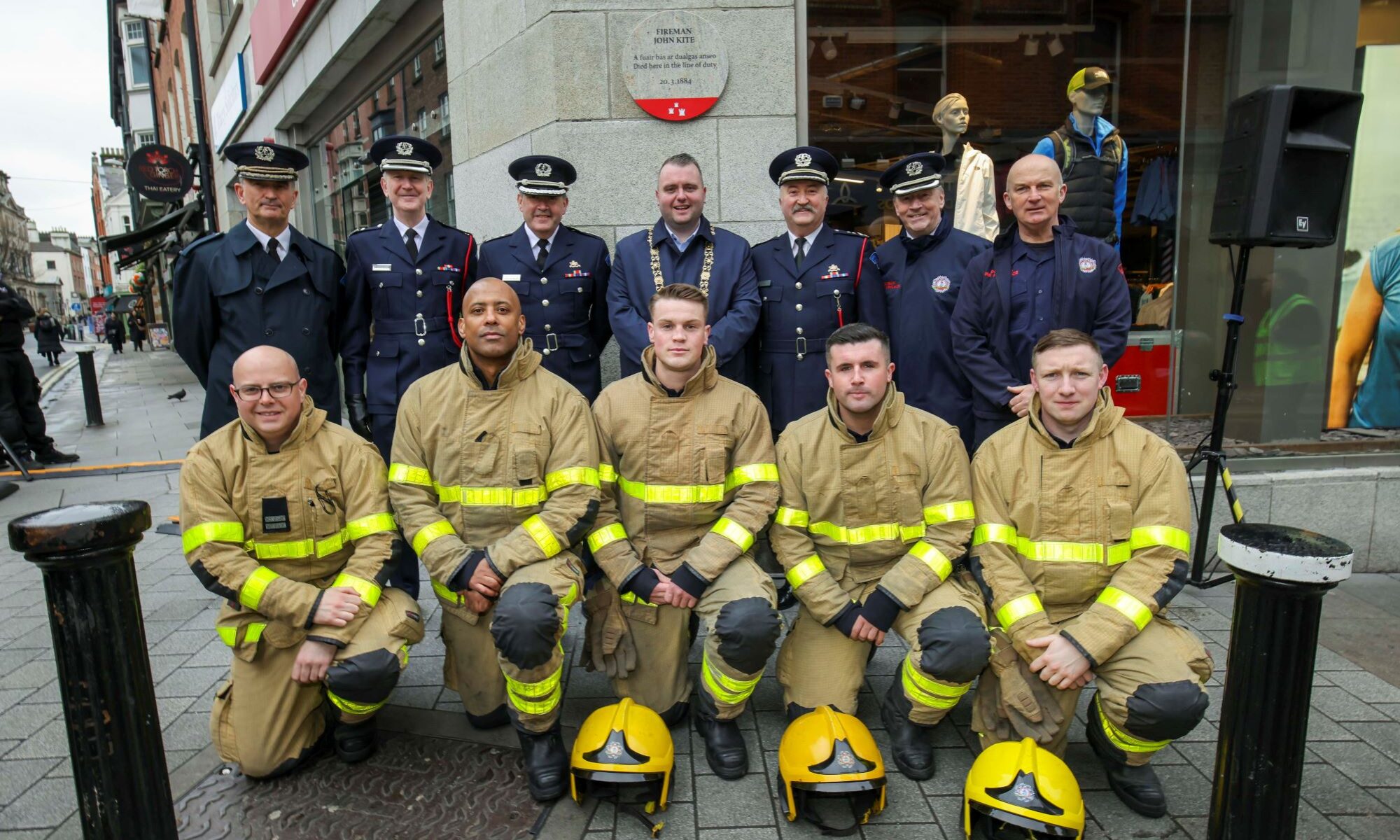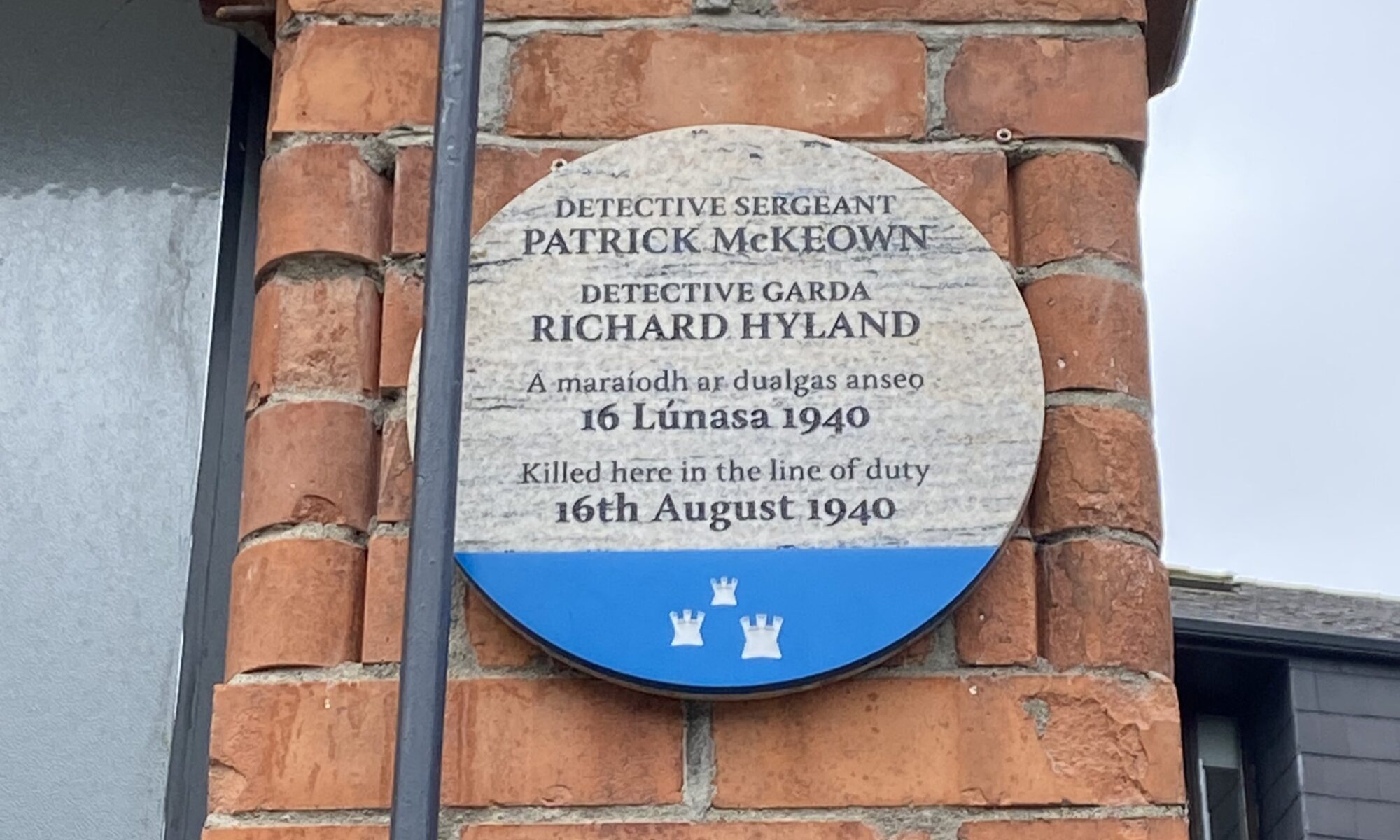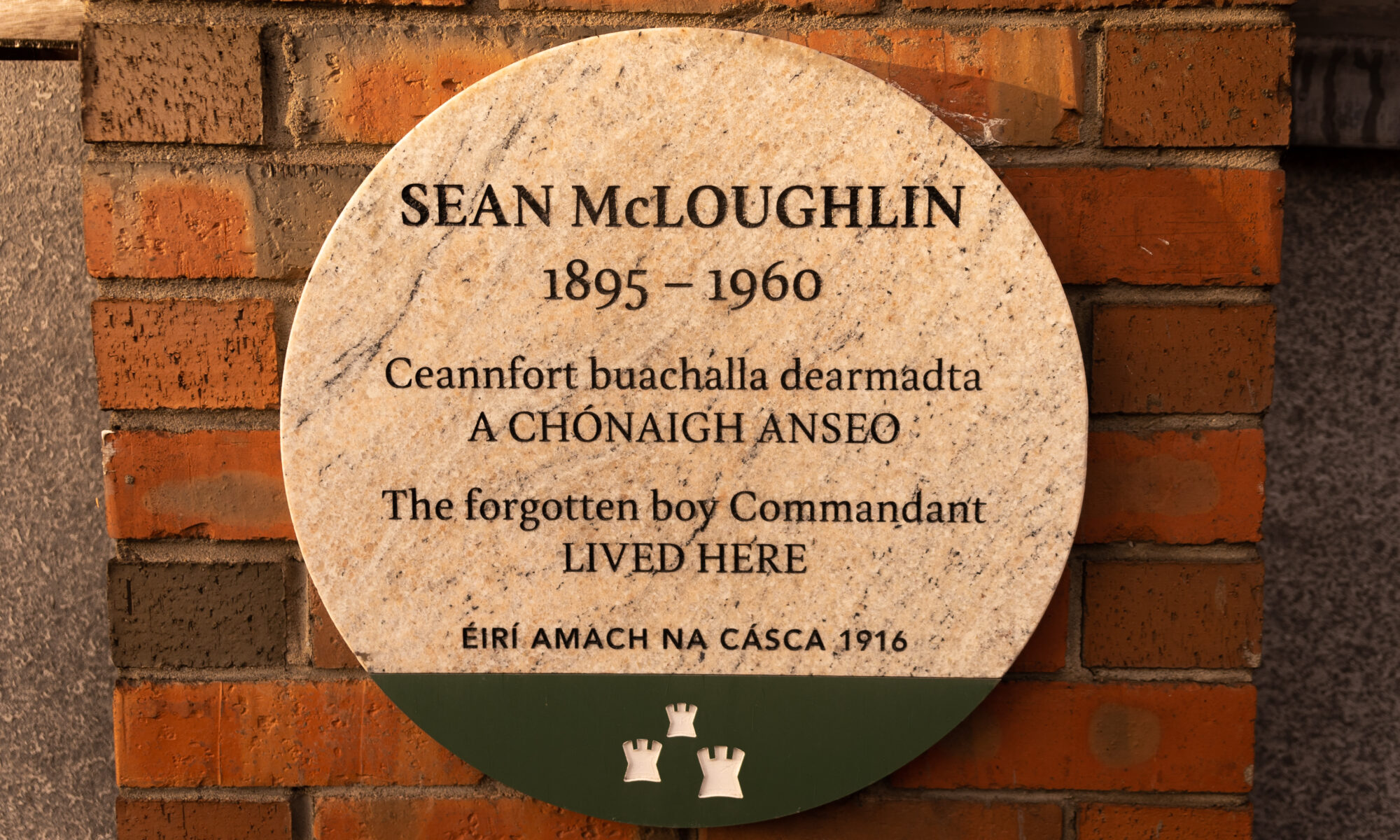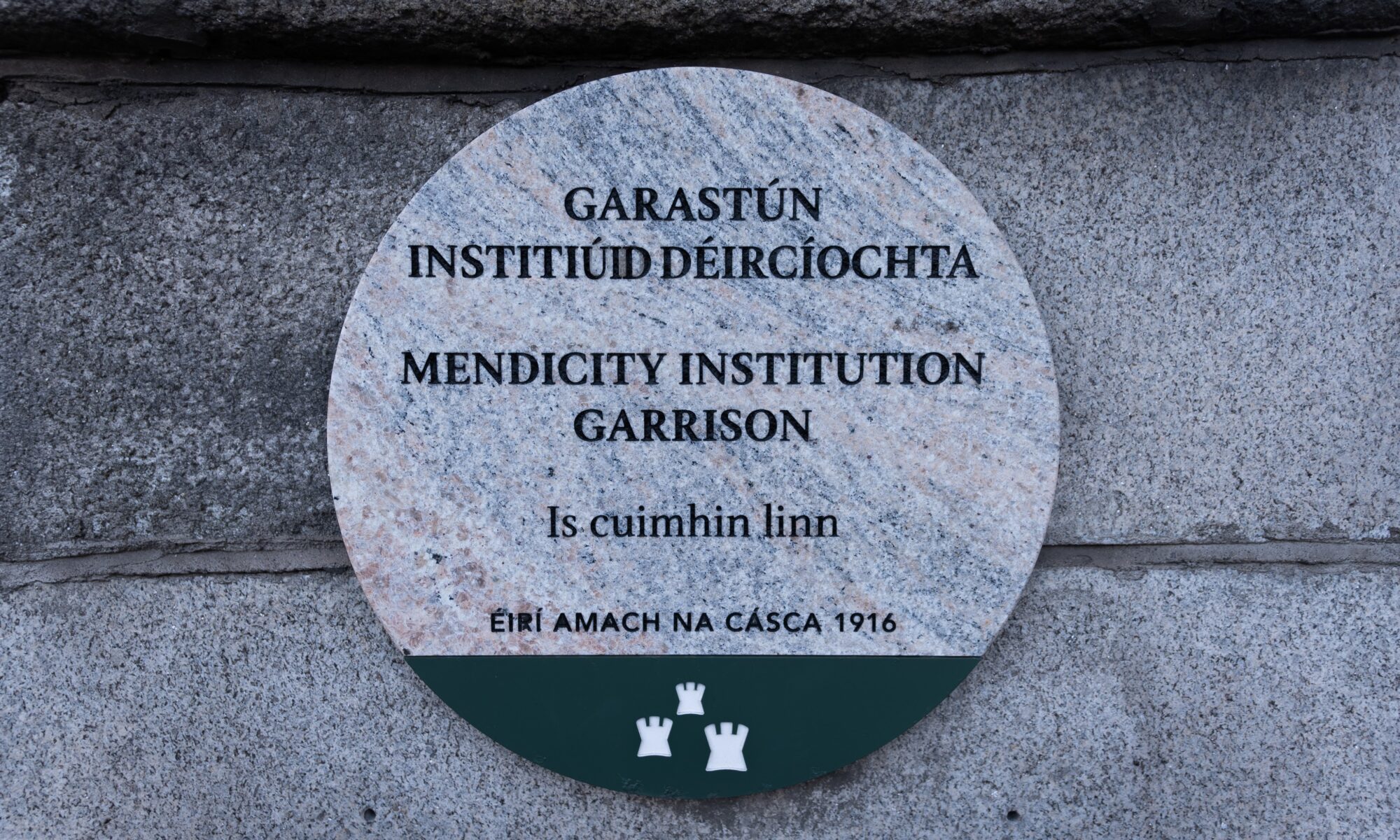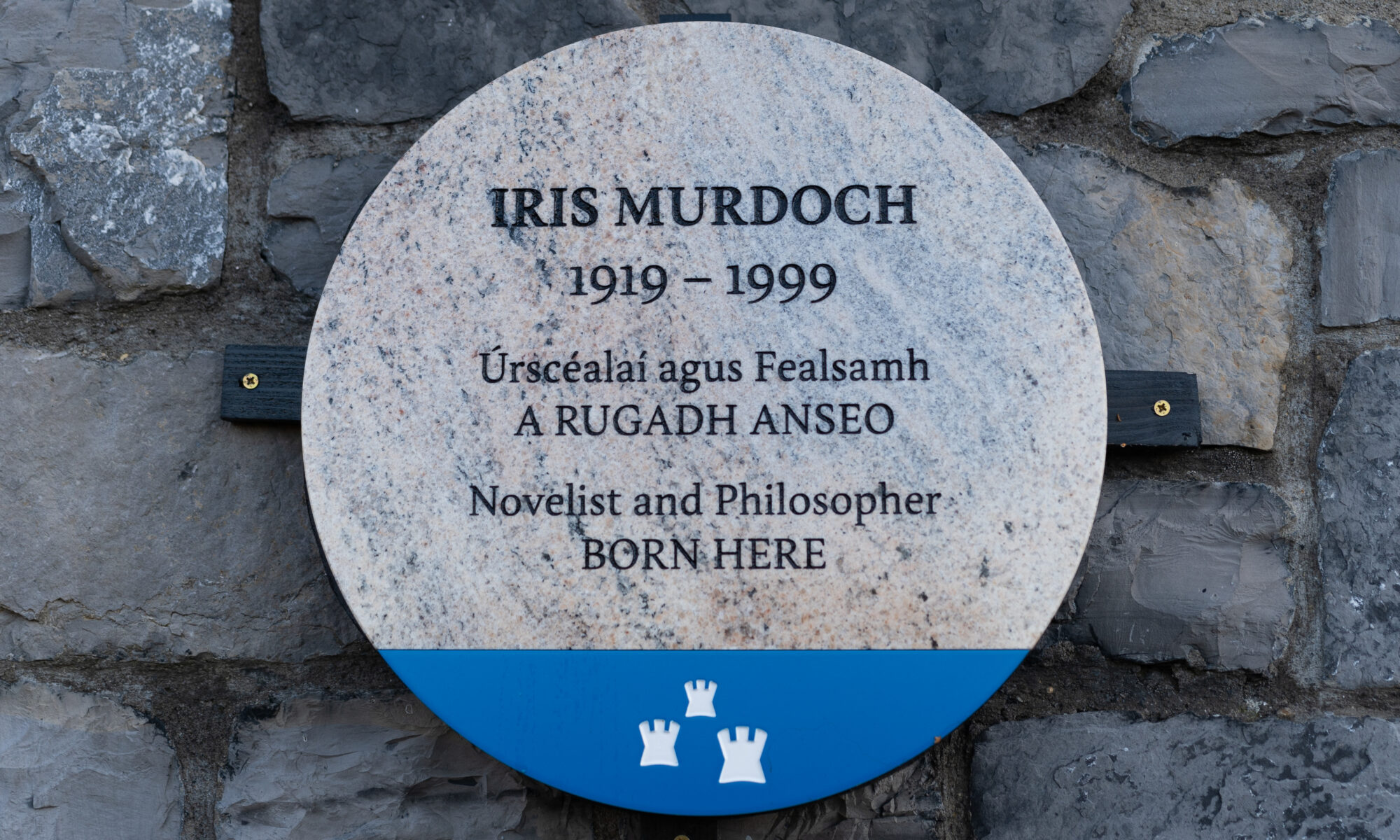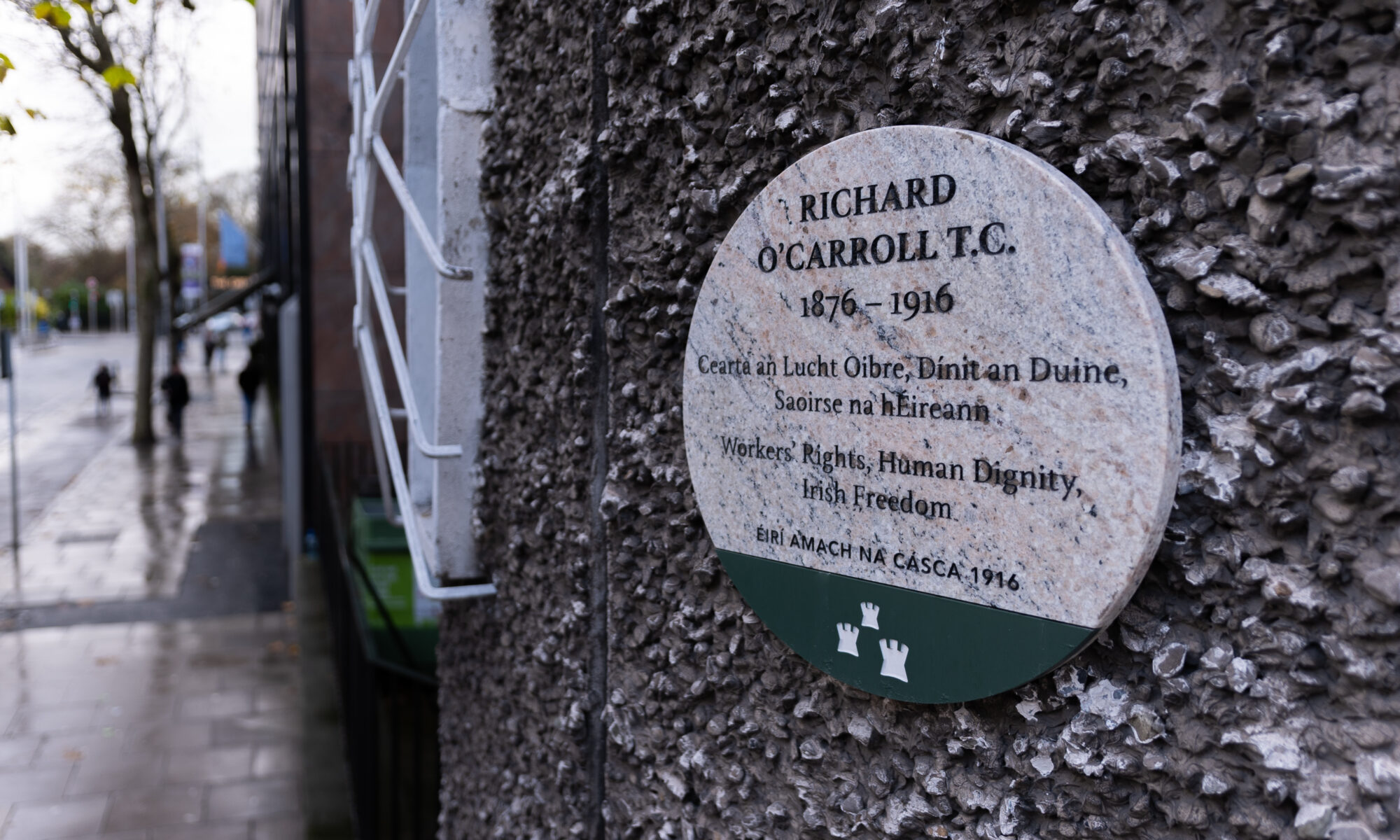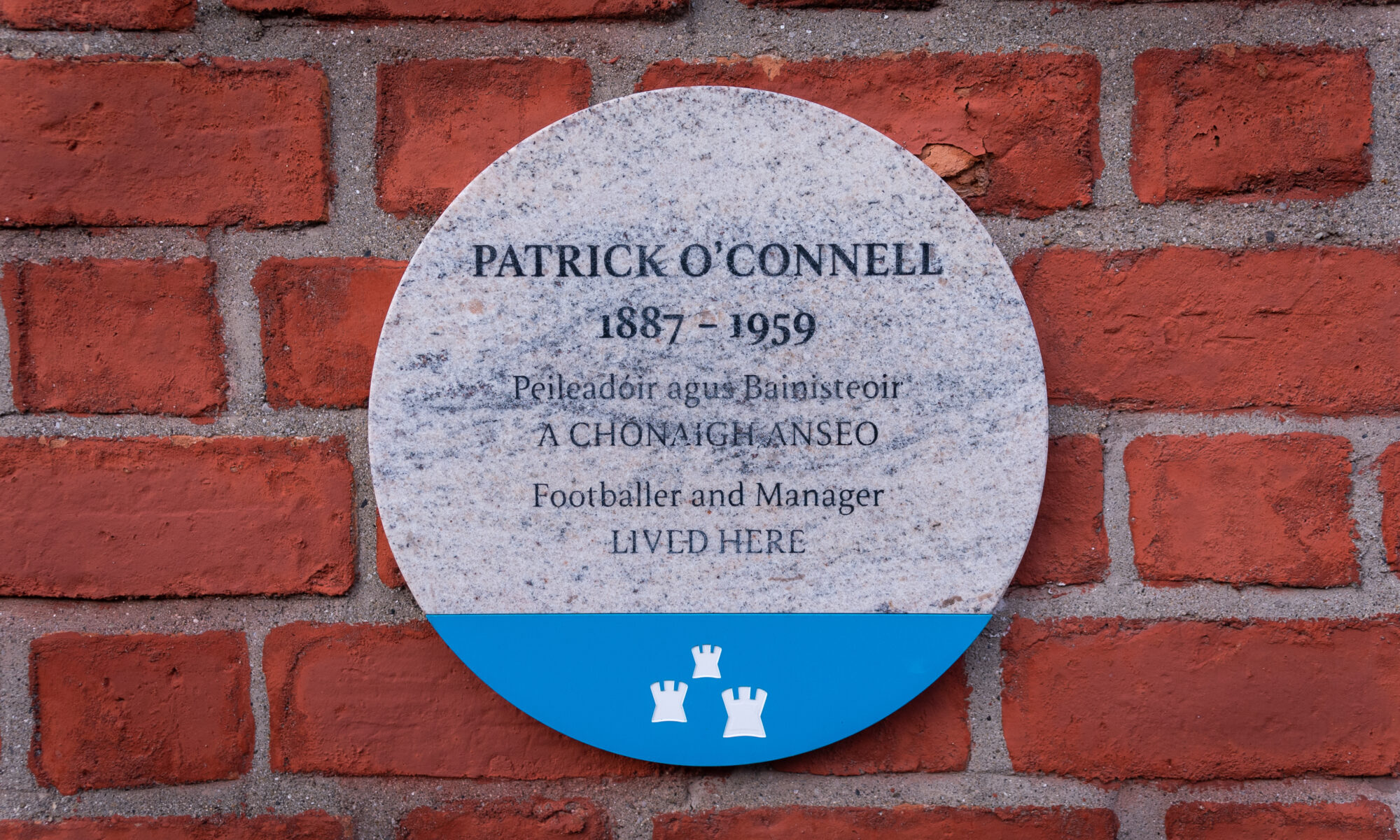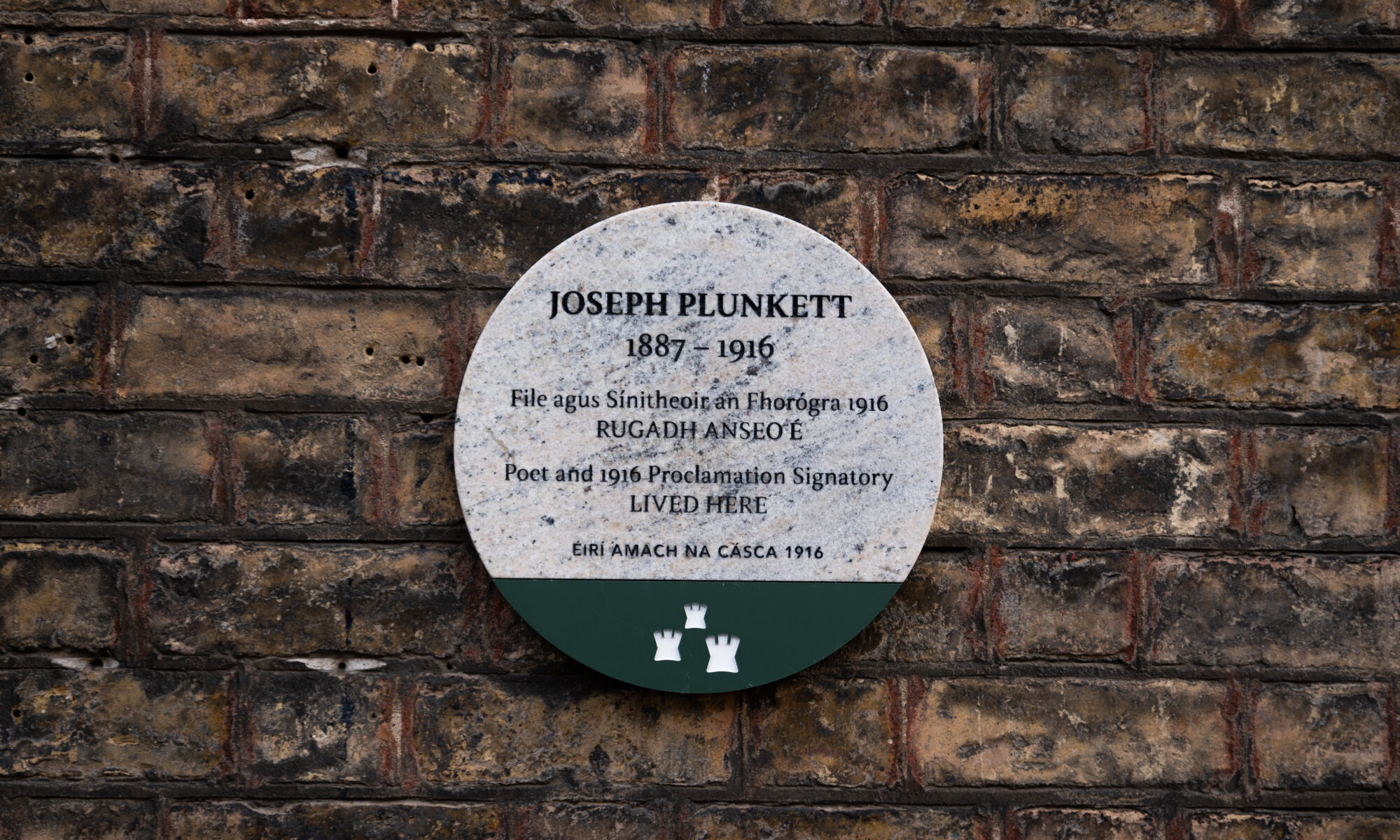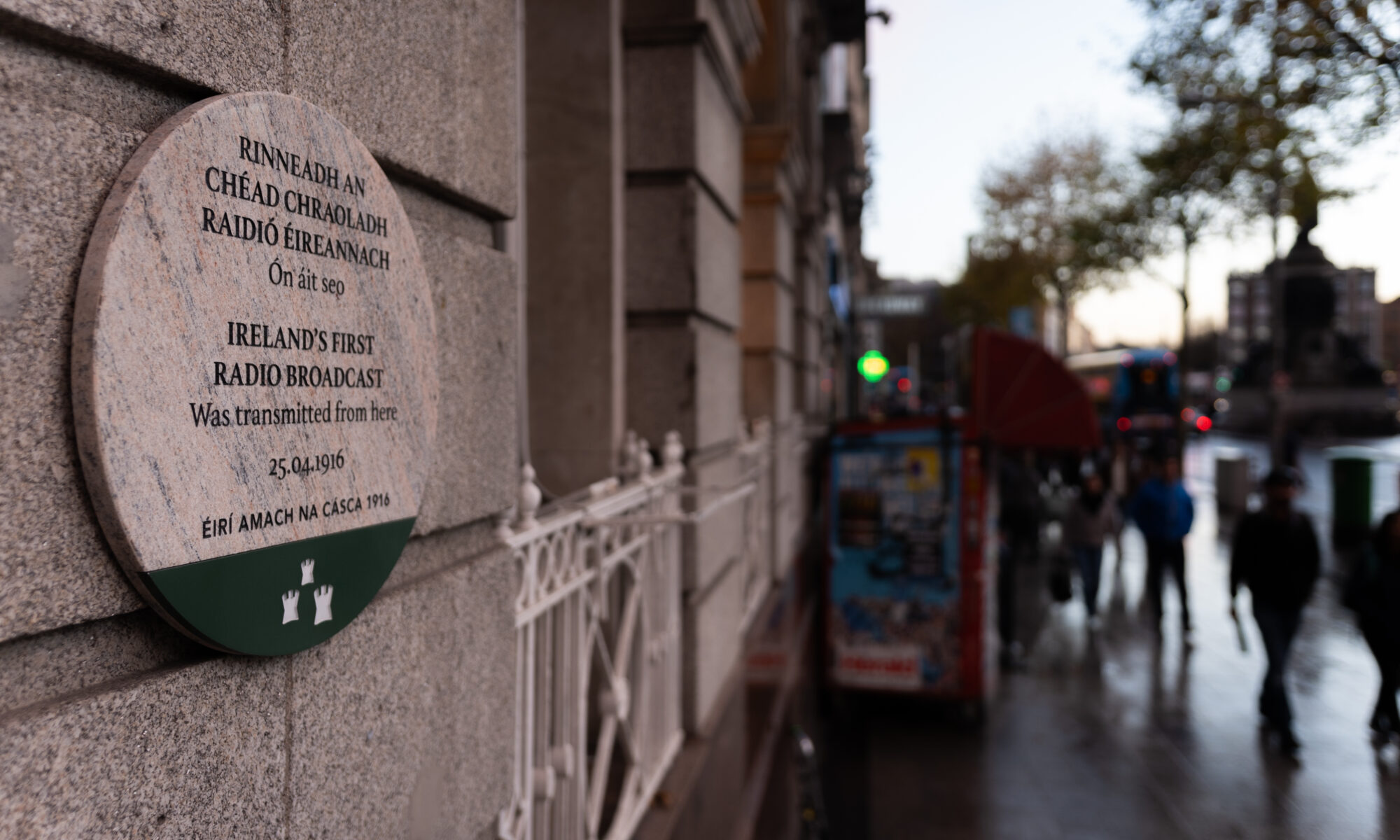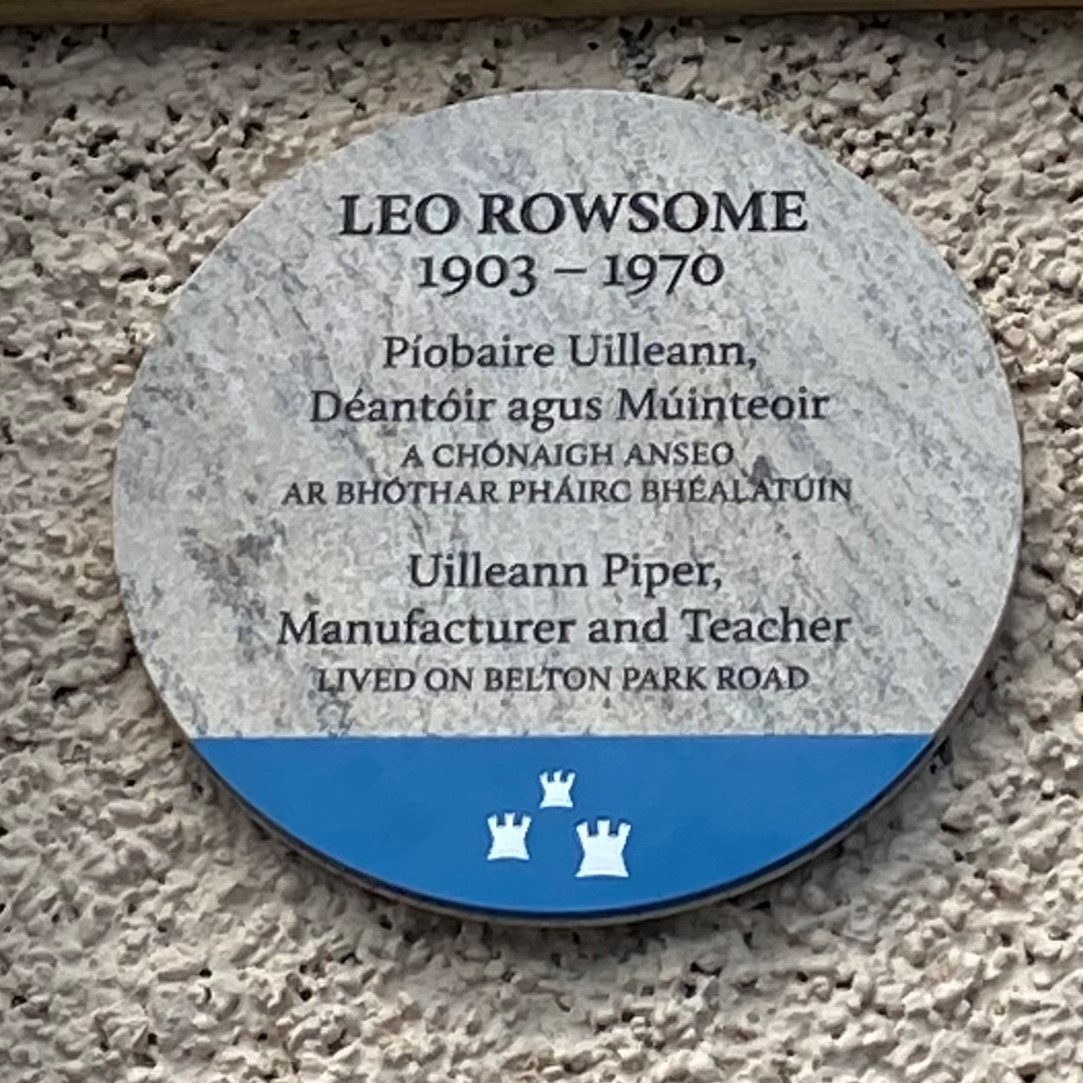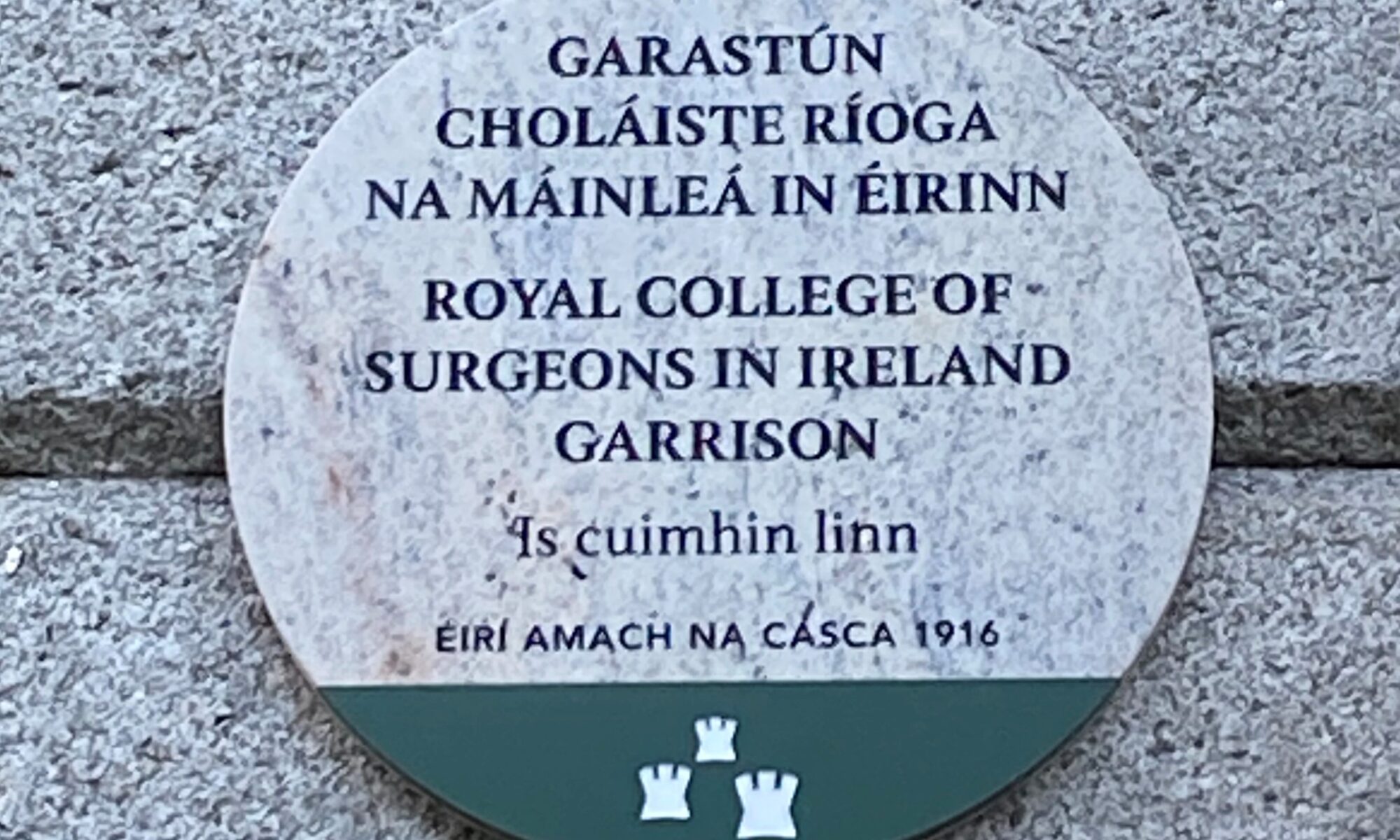On Monday 16th August, 2021, a Dublin City Council honouring Detective Sergeant Patrick McKeown and Detective Garda Richard Hyland was unveiled at 97A Rathgar Road, Dublin 6.
The plaque was unveiled by Ms Marie Hyland (daughter of Garda Hyland); Councillor Mary Freehill (representing the Lord Mayor), and Garda Commissioner Drew Harris,
Detective Sergeant Patrick McKeown, from Armagh, and Mayo-born Detective Garda Richard Hyland, were both shot during a raid at 97A Rathgar Road, on 16th August 1940.
Shortly before 8 a.m. on 16th August, 1940 a group of five detectives, under the command of Detective Sergeant Patrick McKeown, carried out a search in Rathgar Road, Dublin, under the provisions of the Offences against the State Act, 1939. After gaining entry to the building, the Gardaí were surprised by a burst of gunfire from behind a partition wall.
Detective Garda Hyland managed to discharge one shot after being wounded which warned off his surviving colleagues from entering through the front of the shop. Detective Sergeant McKeown died from his wounds the following day. Another Garda, Detective Garda Brady, was seriously wounded.
Patrick McKeown was born on 9th April, 1901, and came from Clea, Keady, County Armagh. He joined An Garda Síochána on 13th July, 1923. He was appointed to Detective Branch on 22nd September, 1933, and promoted to Detective Sergeant on 25th September, 1939. He was single. Detective Sergeant McKeown also served at Blackrock and Dun Laoghaire.
The decision to erect the plaque was made by the Dublin City Council Commemorations & Naming Committee.
